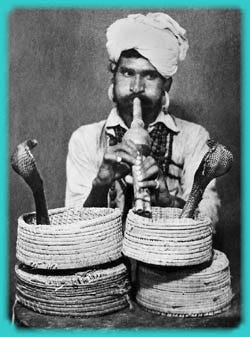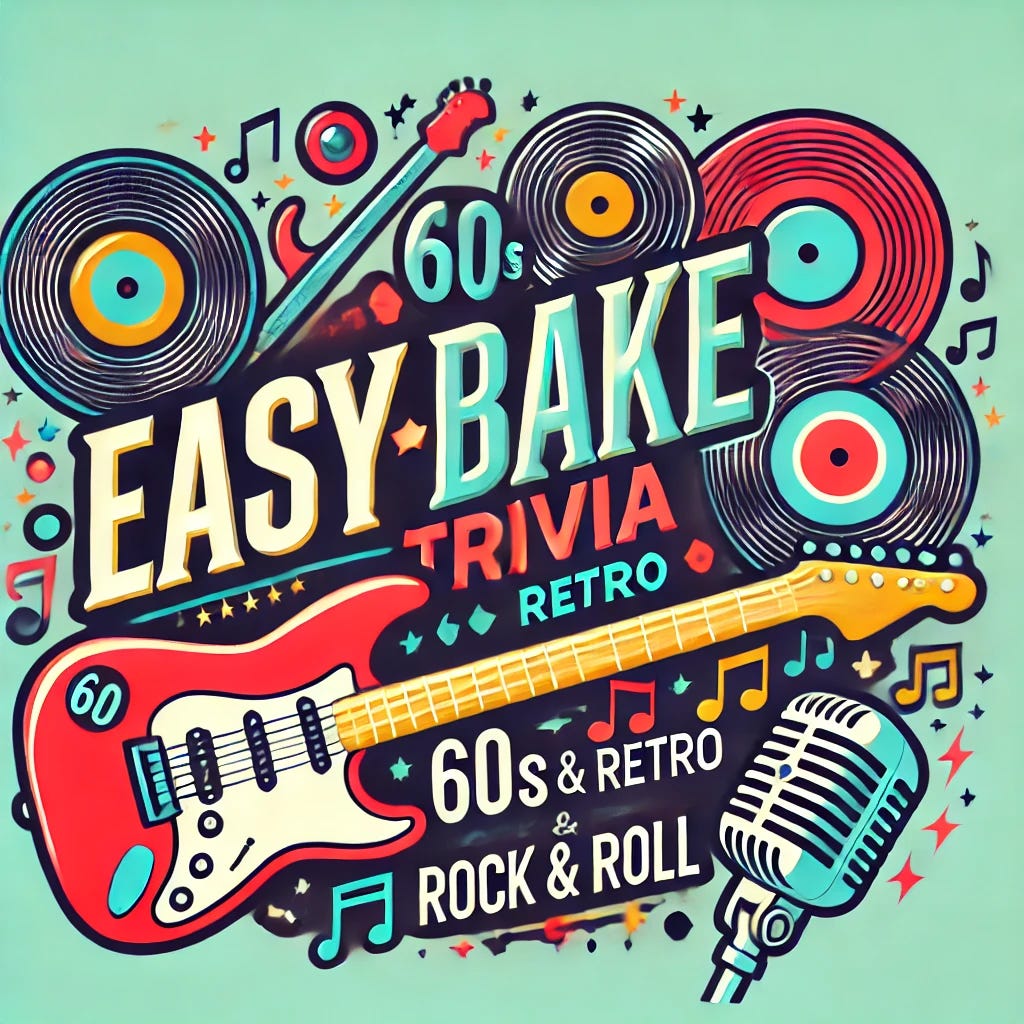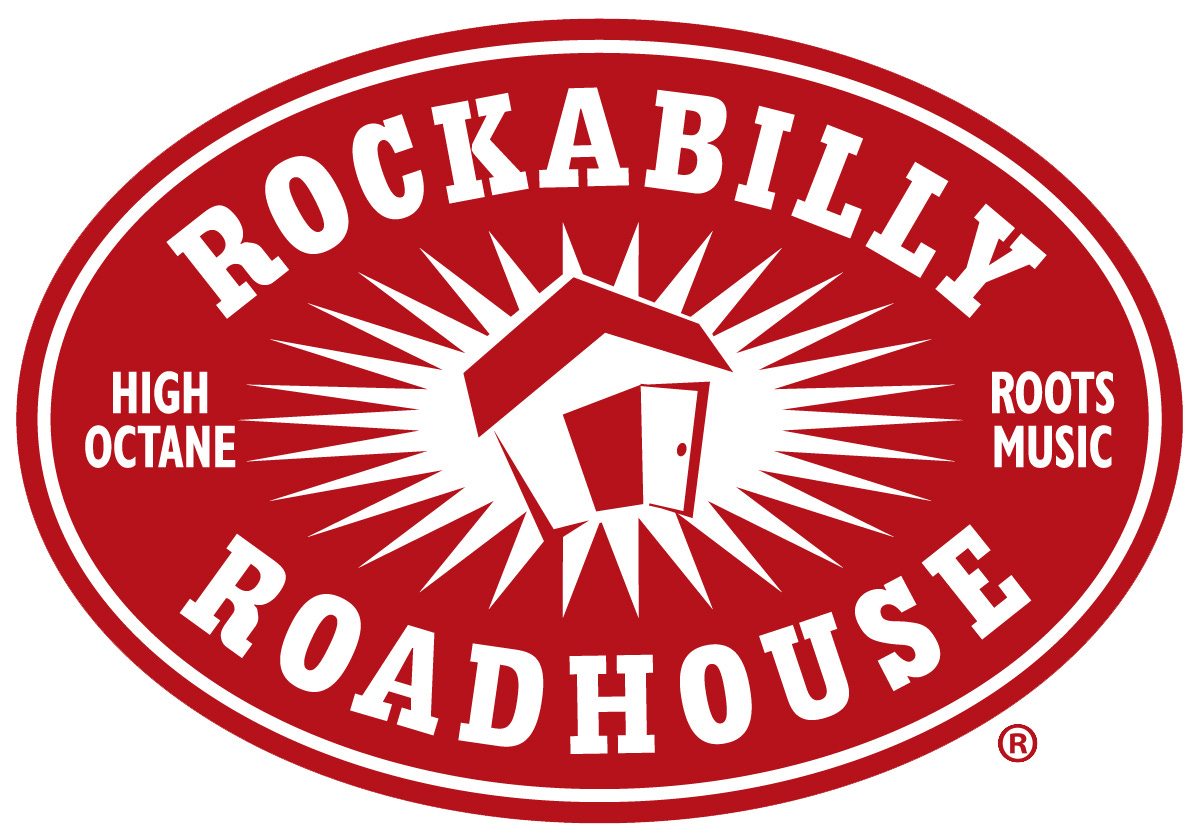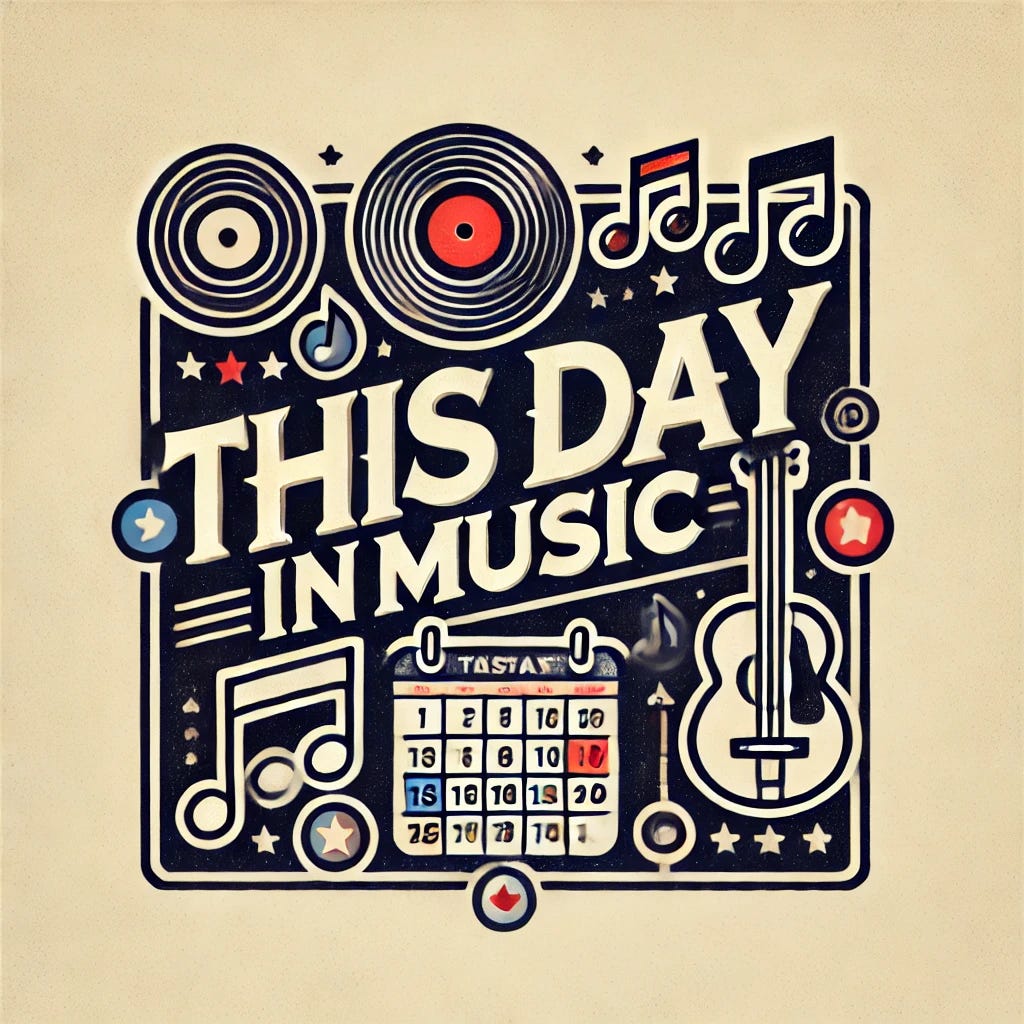PUNMASTER MusicWire by David Gross
A trusted source of music news since 1873 ~ All the news that's fit to be tied
* THE HARDEST WORKING NEWSLETTER IN SHOW BUSINESS *
Made possible by your support
Whoa, Substack lightnin'
Shinin' just like gold
Why don't you hear me cryin'?
A-whoo-hoo, a-whoo-hoo, whoo
July 13, 2025
*** SPECIAL SUNDAY EDITION ***
The MusicWire returns later in July
Behind the Board: When the Artist Is the Engineer, the Producer, and the Sonic Architect
By David Gross, Punmaster MusicWire
In the mythos of rock history, it’s tempting to believe that magic happens when genius musicians meet genius producers. The Beatles had George Martin. Springsteen had Jon Landau. Dylan had Tom Wilson, then Bob Johnston. But there’s a different category of musician—a rarer breed—who not only wrote the songs and played the instruments but also commandeered the studio console like a ship's helm. These were the polymaths of rock, artists with a tape machine in one hand and a strat in the other, who shaped not only their own sound but lent their Midas touch to countless others.
Let’s talk about five titans who embodied this self-contained, fiercely independent approach: Frank Zappa, Todd Rundgren, Leon Russell, Allen Toussaint, and Al Kooper. Each brought a unique philosophy to the intersection of composition, performance, production, and engineering—a blend of vision and execution that few could rival.
Frank Zappa: The Madman with a Mixing Board
Before he became the moustachioed mastermind of Freak Out! and Hot Rats, Frank Zappa was already sharpening his blades behind the console—years ahead of his "official" debut as the arch-composer of the Mothers of Invention. His earliest forays into engineering and production began in the unassuming desert sprawl of Rancho Cucamonga, California, at a small outpost known as Pal Recording Studio, owned by future business partner Paul Buff.
It was 1963. Surf rock ruled the airwaves, and Zappa—barely in his early twenties—was cutting tracks at a furious pace under pseudonyms and oddball monikers. These sessions, now fondly known as the Cucamonga Years, reveal a pre-fame Zappa not just as a musical prankster, but as an ambitious and astute sonic experimenter. He worked on records by The Hollywood Persuaders, The Penguins, The Rotations, and Mr. Clean, juggling roles as writer, engineer, producer, and performer. Sometimes he even played drums or guitar on the sessions.
He and Buff dabbled in primitive multitracking, slapback echo, reversed tapes, and tongue-in-cheek genre pastiches that hinted at the absurdist satire Zappa would soon perfect.
Tracks like “Tijuana Surf,” “Grunion Run,” and the warped doo-wop of “Memories of El Monte” (co-written with Ray Collins) are as much artifacts of the early '60s pop zeitgeist as they are blueprints for the anti-pop Zappa would later unleash.
There’s a raw brilliance to these recordings—equal parts novelty and craft—that makes them more than just curios for completists. They are the foundation of Zappa’s lifelong belief in total creative control. At Pal, he wasn't just learning how to operate a tape machine—he was discovering how to subvert it.
From this humble, sun-bleached lab in the Inland Empire, Zappa emerged not just as a guitarist or a songwriter, but as an auteur. The studio was no longer just a place to document ideas—it was the idea.
Zappa didn’t just blur the line between musician and producer—he obliterated it. His approach to engineering was as aggressive and uncompromising as his guitar solos. Zappa’s home studio, the legendary Utility Muffin Research Kitchen, was a sonic laboratory where experiments in editing, overdubbing, and tape manipulation took precedence over traditional notions of genre or radio-friendliness.
He was one of the first rock artists to fully embrace the studio as an instrument—Over-Nite Sensation, Apostrophe (’), and Joe’s Garage are testaments to his command of multitrack recording, spatial awareness, and his precision in mixing dense, complicated arrangements. He pushed engineers at venues and broadcast stations as hard as his own band members, demanding fidelity and clarity above all.
Zappa also brought a producer’s mind to other artists. He famously produced Captain Beefheart’s Trout Mask Replica—a chaotic masterpiece that required Zappa’s meticulous cutting and reassembling of seemingly anarchic takes into an otherworldly audio collage. That album wouldn’t exist without Frank’s postmodern approach to tracking and assembly.
Todd Rundgren: The Wizard, the True Engineer
Todd Rundgren has always worn his wizard robe inside out. One moment, he’s producing a chart-topping soft rock ballad like “Hello It’s Me.” The next, he’s manipulating synthesizers on a Utopia project or overseeing one of the most beloved power-pop albums of the 1970s.
His work as a solo artist alone is a study in total studio autonomy—Something/Anything? (1972) was essentially a one-man-band masterpiece recorded in his apartment and engineered by himself. He even staged conversations with his imaginary studio personnel to reveal how truly self-reliant he was. Few artists captured the dawning era of home recording better than Todd.
But it was as a producer that Rundgren became a tastemaker. He helmed Meat Loaf’s Bat Out of Hell, despite thinking the songs were “moronic.”
He turned XTC’s Skylarking into a lush, near-perfect pop statement—albeit amid legendary creative clashes. And then there’s his overlooked work with The New York Dolls, Patti Smith, and Grand Funk Railroad—always distinctive, always studio-forward.
Technically adept but emotionally attuned, Rundgren brought empathy to the mixing desk, even if it sometimes meant bulldozing egos for the sake of the final product.
Leon Russell: The Tulsa Sound Architect
Leon Russell never looked like a studio nerd. With his long hair, omnipresent shades, and Oklahoma drawl, he resembled a cosmic preacher. But behind the curtain, Russell was a master craftsman—arranger, engineer, and producer. He helped define the Los Angeles session scene in the ’60s as part of the Wrecking Crew, playing behind artists like The Byrds, Gary Lewis, and Glen Campbell.
But it was his Shelter Studios in Tulsa and LA where he made his deepest engineering mark. Albums like Carney, Leon Russell and the Shelter People, and Will O’ the Wisp were warm, gritty, gospel-tinged soundscapes that Russell controlled from conception to final master.
He also produced and arranged for artists ranging from Joe Cocker (that’s Leon directing Mad Dogs & Englishmen) to Freddie King, helping usher King’s comeback with a rock-infused blues sound that prefigured Stevie Ray Vaughan.
Whether behind a B3 organ or a reel-to-reel machine, Russell sculpted music with deep emotional gravity and technical elegance.
Allen Toussaint: The Crescent City’s Studio Commander
Allen Toussaint was as refined as he was revolutionary. As both a producer and arranger, he helped shape the sound of New Orleans R&B in the 1960s and ’70s—but he did it behind the boards as much as behind the piano.
Toussaint engineered and produced records that captured the syncopated pulse of the city—earthy, swampy, and unpretentious.
His work with The Meters, Lee Dorsey (“Working in a Coal Mine”), and Dr. John brought second-line rhythms and funky horn lines to national attention, recorded with clarity and swing.
He was a minimalist engineer, favoring feel over technical complexity. You can hear it on Labelle’s Nightbirds, especially the smash hit “Lady Marmalade”—produced and arranged by Toussaint with just the right mix of dirt and polish. And on his own albums like Southern Nights, he created lush, baroque soul that was deceptively simple in execution but deeply nuanced in production.
His studio, Sea-Saint, co-founded with Marshall Sehorn, was New Orleans’ answer to Muscle Shoals—a locus of groove and grace.
Al Kooper: The Reluctant Genius Behind the Glass
Al Kooper never aspired to be a producer in the traditional sense—he just couldn’t stand when things sounded wrong. A restless sonic perfectionist, Kooper was the type of guy who could identify the wrong compressor on a snare drum mid-take and fix it while quoting a Dylan lyric.
He founded Blood, Sweat & Tears, but left after one album when the band veered too far from his vision. His fingerprints are on Super Session with Mike Bloomfield and Stephen Stills, where he not only played most of the keyboards and arranged the material, but also engineered and mixed it himself.
And then there’s Lynyrd Skynyrd. Kooper discovered them, produced their first three albums, and helped arrange and capture the southern-fried bite of “Free Bird” and “Sweet Home Alabama.” He reportedly even added Mellotron and piano parts without telling the band.
Kooper was also the man behind the desk for The Tubes, B.B. King, and others—but his real gift was recognizing when a take had magic and knowing how to enhance it without suffocating it. His production style was fast, instinctual, and raw—more gut than polish.
Final Thoughts: Autonomy Is the Ultimate Instrument
These five artists prove that the best producers aren’t just engineers—they’re visionaries who understand sound as intimately as they do melody. They didn’t need someone else to “get” them. They were the entire apparatus: writer, arranger, performer, producer, mixer, and sometimes even label head.
In today’s DIY age, every bedroom producer owes a debt to Zappa’s tape splices, Rundgren’s multi-tracks, Russell’s studio sanctuaries, Toussaint’s groove labs, and Kooper’s instincts.
Because when the artist controls every lever, every slider, and every sonic choice, the results may be messier—but they’re unmistakably, inarguably human.
Deep Grooves & Quick Hits
By Dee Gee, Punmaster MusicWire
Welcome to Deep Grooves & Quick Hits, your slightly warped crystal ball of music news—half blotter, half whispering amplifier.
Mr. Blue Sky Fades to Black
Jeff Lynne, the sonic sorcerer behind ELO’s orchestral pop grandeur, has canceled what was billed as his final-ever ELO performance at London’s BST Hyde Park. Struck by a “systemic infection,” Lynne has pulled the plug on the finale with no plans to reschedule. After five decades of studio wizardry and symphonic hooks, the spaceship doors may be closing for good.
Got Back Again
Paul McCartney, who’s logged more miles than the Yellow Submarine, has announced fresh Got Back tour dates for 2025. New stops include Atlanta, Chicago, Buffalo, Montreal, and firsts for both Albuquerque and the Coachella Valley. At this rate, he’s going to out-tour Father Time.
Mick Meets Afro-Fusion
Mick Jagger lends his ever-distinctive growl to Nigerian superstar Burna Boy’s track “Empty Chairs,” featured on Burna’s new LP No Sign of Weakness. Sir Mick says he “loved” the collab—somewhere between Fela and Fool to Cry.
Ronnie Rolls Through the Years
Ronnie Wood takes a victory lap with Fearless: Anthology 1965–2025, a 60-year (!) audio scrapbook charting his journey from The Birds to Beck, Faces to Stones, and everything riffy in between.
Bob Dylan Keeps Knockin’
The never-exactly-ending Rough and Rowdy Ways tour continues into 2025, with fresh UK and European dates. Dylan’s not so much saying goodbye as mumbling, “See you down the road.”
Alice’s Long-Lost Sequel
The original Alice Cooper group claws its way out of the crypt with The Revenge of Alice Cooper, their first joint album since 1972’s Muscle of Love. Drops July 25. Expect snakes, guillotines, and maybe even closure.
Melbourne Goes Deep & Weird
The 2025 Melbourne International Film Festival dives into the loud and the legendary with documentaries on Jimmy Barnes, Jeff Buckley, and the Butthole Surfers. No popcorn will be harmed.
Billy Joel, Prime Time Piano Man
And So It Goes, an HBO Max two-part documentary, promises a peek into the psyche behind the piano. Expect ballads, breakdowns, and a few bottles of red and white. Watch the teaser here.
….Stay tuned.
A blast from the past
Black Sabbath performing "Paranoid" on the U.K. television show Top of the Pops in 1970
THE PUNMASTER by David Gross
TODAY'S EASY-BAKE TRIVIA QUESTION
Jim Morrison saw the title of this film on a marquee in Times Square and incorporated it into the song "When the Music's Over".
The answer will appear in the next MusicWire...
The trivia question from the last MusicWire was:
Which drummer got his start in a Central California surf band that blended R&B and Latin influences into instrumentals like "Latin’ia," before going on to play with two of the most influential American rock bands of the late '60s and '70s.
For extra points name the 2 bands.
For even extra points, who played keyboards in the band.
Answer: John “Johnny” Barbata
Later joined The Turtles and Jefferson Starship
In addition, Lee Michaels (then known as Michael Olsen) on keyboards.
This week’s winners are Jack Ortman and Steve Finnegan
TURN UP THE FUN!
It's The Rockabilly Roadhouse with Big Dave
Saturdays • 9–11AM (Pacific)
Two turbo-charged hours of high-octane roots, rockabilly & revved-up classics!
Rebroadcast Saturday nights at 7PM
Kickstart your weekend—guaranteed.
Listen live at KRSH.com
Download the FREE KRUSH mobile app
Or tune in to 95.9 The Krush in Sonoma County, CA
Tell 40 or 50 of your closest friends!
Check out the web site at rockabillyroadhouse.com
It's time to get down to the Main Gazane with Big Dave!
Big Dave Presents:
The Saturday Night Album Trax
Saturdays 9-10 pm on the KRUSH 95.9 FM
BREAK OUT THE HEADPHONES!
Hosted by Big Dave, the Saturday Night Album Trax features some of the greatest albums ever recorded. Deep cuts, live albums, extended tracks, rarities and themes. Plus get the background and inside stories on these classic albums.
These are the good old days!
STREAM IT LIVE at KRSH.com
THIS DAY IN MUSIC
You Can Quote Me On That…
"Elvis may be the King of Rock and Roll, but I am the Queen.” - Little Richard
"If you tried to give rock and roll another name, you might call it 'Chuck Berry’.” - John Lennon
“The old-timers schooled me good. They brainwashed me to respect music, whether we were playing rockabilly or blues or rock and roll.” - Dr. John
“If you think you are too old to rock ‘n roll, then you are.” - Lemmy Kilmister
“The reason kids like rock ‘n roll is their parents don’t.” - Mitch Miller
“Rock ’n roll is really swing with a modern name. It began on the levees and plantations, took in folk songs, and features blues and rhythm. It’s the rhythm that gets to the kids – they’re starved of music they can dance to, after all those years of crooners.” - Alan Freed
“If I were not a physicist, I would probably be a musician. I often think in music. I live my daydreams in music. I see my life in terms of music.” - Albert Einstein
"I opened the door for a lot of people, and they just ran through and left me holding the knob." - Bo Diddley
"Hippies? Why, I'm the original." - Jerry Lee Lewis
"David Gross (Punmaster MusicWire) is the Arianna Huffington of music news!" - Barry "The Fish" Melton
"The older you get, the better you were!" - Leslie West
"It's much too late to do anything about rock & roll now ..." - Jerry Garcia
"I'm as country as a dozen eggs." - Elvin Bishop
"The music business is a cruel and shallow money trench, a long plastic hallway where thieves and pimps run free, and good men die like dogs. There's also a negative side." - Hunter S. Thompson
"Rock journalism is people who can't write interviewing people who can't talk in order to provide articles for people who can't read." - Frank Zappa
"Mike Love, not war." - Scott Mathews
"I have outlived my dick" - Willie Nelson (2008)
"Rock and roll is here to stay.” - Neil Young









